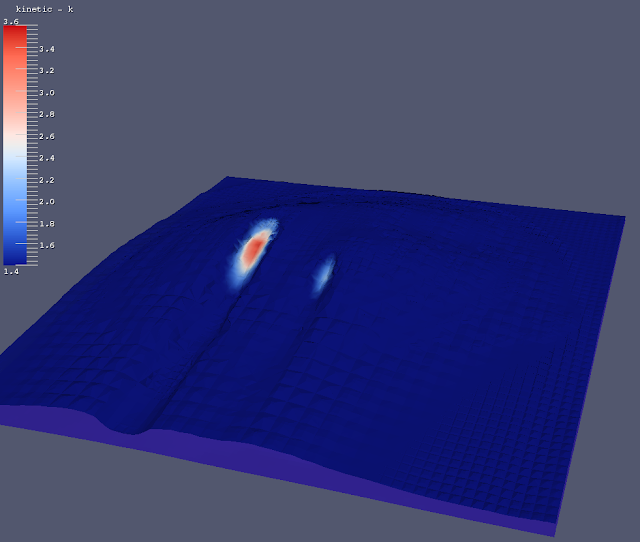Wind turbines simulated over a complex terrain
This is my first try to solve a CFD case for two wind turbines over a complex terrain. OpenFOAM is used to solve the full 3D Navier-Stokes equations using the k – ε turbulence closure scheme appropriately parameterized for atmospheric flows. The rotor disks are approximated as a momentum sink, to represent the axial force across the disk, associated with a constant thrust coefficient over the rotor area. Enjoy!
Import the terrain.stl
Meshing the geometry
Set up two actuator discs
Velocity X (zero at the ground)
Kinetic k [1.4, 3.6]

Dissipation rate ε [0.1, 1]
Below the results of velocity-X and kinetic-k as they have been presented in an iso-surface near the hub height of the wind turbine rotors, inside the atmosperic boundary layer.
Velocity X - near the hub height
(atmospheric boundary layer)
Kinetic k - near the hub height
(atmospheric boundary layer)









